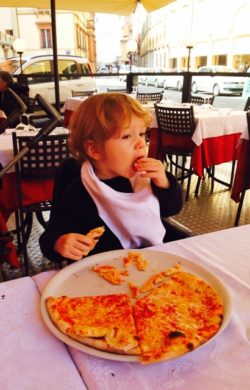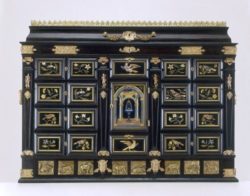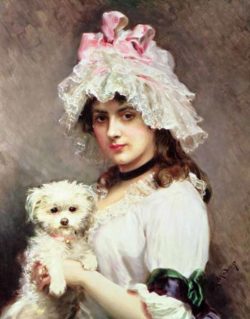Read Time: 8 Minutes Subscribe & Share
Vintage Staycations
 Not the best year for travel literature. Imagine one hundred years from now people reading our quaint descriptions with anthropological commentary of our staycations. The picture I could paint of Bologna in the summer of 2020 would include fashionably-dressed mask-covered diners – some of whom have matched their face-coverings to their outfits – the new hand-sanitizer ritual when entering any business or restaurant, and the strange appearance of people standing in orderly lines, waiting patiently in place for their turn to enter. With beach season in full swing, we’re all wondering what the experience will be like wearing masks in hotels and restaurants and trying to keep at least a meter’s distance from each other while building sand castles and jumping into the waves.
Not the best year for travel literature. Imagine one hundred years from now people reading our quaint descriptions with anthropological commentary of our staycations. The picture I could paint of Bologna in the summer of 2020 would include fashionably-dressed mask-covered diners – some of whom have matched their face-coverings to their outfits – the new hand-sanitizer ritual when entering any business or restaurant, and the strange appearance of people standing in orderly lines, waiting patiently in place for their turn to enter. With beach season in full swing, we’re all wondering what the experience will be like wearing masks in hotels and restaurants and trying to keep at least a meter’s distance from each other while building sand castles and jumping into the waves.
In the 1990s my sister-in-law and a friend of hers decided to tour Rome using a Touring Club Italiano guidebook published in 1977, to see the capital through the perspective of two eras. Not being able to venture far off ourselves, we’ve taken inspiration from their retro holiday by reading what anglophones wrote about their trips and how they travelled in Italy. People have been writing about their sojourns on the continent and in the boot for ages, literally, so choice is not limited. Here’s a selection spanning three centuries, and all three books can be read online if you can’t get to a library or bookstore or be bothered with yet another Internet order.
Explore Everything; Keep The Better
John Evelyn had a library containing almost four thousand books, many of which were inscribed with his motto Omnia explorate; meliora retinete  (explore everything; keep the better). An apt statement for a man who wrote a diary that spanned his life from the age of twenty in 1640 to the year of his death in 1706. His personal journal was published in
(explore everything; keep the better). An apt statement for a man who wrote a diary that spanned his life from the age of twenty in 1640 to the year of his death in 1706. His personal journal was published in
1818, but was quickly overshadowed by the juicier memoir penned by Samuel Pepys. Evelyn came from a family whose wealth in part came from gunpowder production, so he had the means to travel on the continent from 1642 to1647, conveniently avoiding the English Civil War. His exploration of Italy in seventeenth-century style covers pages 82 to 232 of his diary, arriving in Genoa from Nice and onto Switzerland by way of the Duchy of Milan, or today’s Lombardia. From 1644 to 1645 he visited major and minor locations of the peninsula, travelling by horse and by boat. It’s fascinating to read about how people travelled at that time, moving at a much slower pace, sending letters of recommendation in order to be received by upstanding families and personages, and the lavish souvenirs they brought home. For instance, Evelyn ordered a luxurious cabinet to be made in Florence and had it sent to his home in England. Covered in ebony and pietra dura plaques, apparently his diaries were discovered in it in 1803. The piece of furniture now stands in the Victoria and Albert Museum and is officially known as John Evelyn’s Cabinet.
 On page 190 he sets out for Bologna from Florence. He compares the city to a ship with the Asinelli Tower as its mast and the crooked Garisenda Tower being partly demolished “for fear it should really fall, and do mischief”. Like any Grand Tourist of his time, he visited and wrote about the important buildings and artwork he saw, including Guido Reni, Raphael, Guercino, the Carracci brothers and “a virgin named Isabella Sirani.” Could that be none other than Elisabetta Sirani, already earning her fame as a painter at the age of seven? After listing palaces and paintings, Evelyn pens some observations of the city itself and its food, which provide a sense of reality that lists of established tourist attractions fail to do.
On page 190 he sets out for Bologna from Florence. He compares the city to a ship with the Asinelli Tower as its mast and the crooked Garisenda Tower being partly demolished “for fear it should really fall, and do mischief”. Like any Grand Tourist of his time, he visited and wrote about the important buildings and artwork he saw, including Guido Reni, Raphael, Guercino, the Carracci brothers and “a virgin named Isabella Sirani.” Could that be none other than Elisabetta Sirani, already earning her fame as a painter at the age of seven? After listing palaces and paintings, Evelyn pens some observations of the city itself and its food, which provide a sense of reality that lists of established tourist attractions fail to do.
“This city is famous also for sausages; and here is sold great quantities of Parmegiano cheese, with Botargo, Caviare, &c. which makes some of their shops perfume the streets with no agreeable smell.”
The contemporary foodie would find a much more romantic way to describe the olfactory atmosphere of Bologna, but Evelyn’s diary is rich with detail, and there is genuine charm in rediscovering a place through the wonder and prejudice of another person’s point of view. So many novelties are striking for the 21st century reader, and not just because of how industrialization and technology have changed our lives. He travelled from Bologna to Ferrara in a boat along a canal network, being pestered along the way by “flying glow-worms” he had never seen before – fireflies.
An Arcadian Patroness
Just over a century later, Lady Anna Riggs Miller would write much more extensively about traveling through eighteenth-century Italy with her husband. From 1770 to 1771, the English heiress corresponded with a friend about her experience, which was later published anonymously in three volumes titled Letters from Italy: Describing the Manners, Customs, Antiquities, Paintings &c. of That Country. When the letters were published, a snarky Horace Warpole apparently wrote, “The poor Arcadian patroness does not spell one word of French or Italian right through her three volumes of travel”. Like Evelyn, Miller would decorate her home with her contentintal finds. She bought a vase in Italy that had been dug up in Frascati. Once back in England, she began hosting a literary salon in her home, and guests were invited to drop their written verses into the relic that was placed on an altar.
You can read about her travels in Bologna on pages 305-361 of the first volume of letters. Miller is just as struck by the artwork and by the statue of  Neptune as Evelyn would be one century earlier. She paints a much vaster picture of the city and its society than her compatriot, with her visits to the opera house and homes of notable Bolognese families and religious figures. There is an elaborate ritual of socializing as foreigners abroad, sending letters of recommendation to unknown natives in order to be invited into their homes, and the Bolognesi are lavish in bestowing gifts and pleasantries on these temporary tourists. Miller even receives a lap-dog of ancient noble breed from Madama Aldrovandi but must return the gift because it does not get along with her own canine companion.
Neptune as Evelyn would be one century earlier. She paints a much vaster picture of the city and its society than her compatriot, with her visits to the opera house and homes of notable Bolognese families and religious figures. There is an elaborate ritual of socializing as foreigners abroad, sending letters of recommendation to unknown natives in order to be invited into their homes, and the Bolognesi are lavish in bestowing gifts and pleasantries on these temporary tourists. Miller even receives a lap-dog of ancient noble breed from Madama Aldrovandi but must return the gift because it does not get along with her own canine companion.
She reports to her friend the meal she has in order to illustrate how the cuisine varies across Italy. Though written two-hundred and fifty years ago, her raptures about food would not be lost on a modern audience, and today’s diners would be equally staggered by the quantity of dishes.
“Our dinner to-day consisted of a white soup, with vermicelli and fine Parmesan cheese rasped over the surface, half a Bologna hog’s-head admirably dried and dressed, superior to any hog-meat I ever tasted in England, une friture tres recherchée, a dish of bouille, a poularde, one of the finest I ever saw […] a fore-quarter of lamb roasted, a fricando with small navées, spinach dressed the French way, colliflower, friccasseed truffles dressed with butter and anchovy, a dish of mortadello: for des the finest white grapes imaginable, white Bury-pears, the best chestnuts and walnuts, being of an uncommon size and sweetness. […] Our dinner we mutually agreed was too abundant for two persons only to sit down to; as some of the dishes went away untouched, our host was shocked, fearing we did not like them: I sent for him, and told him we were perfectly satisfied with what he had provided; but desired he would for the future give us only a soup, an entrée, and something roasted, with a plate or two of garden stuff, and a dessert, and to vary the dishes he as he saw proper.”
A Tramp Abroad
 Logically, it wouldn’t be until after the Revolution that an American perspective on the Grand Tour would evolve. The 1800s would see the likes of Henry James and less famous figures like the Saxton sisters embarking on a tour of the continent and writing about the experience either as novels or as correspondence. Mark Twain, however, in A Tramp Abroad replaces the gravitas of other writers with humor, keen observation and his powerful and amused imagination. Published in 1880 and considered a sequel to The Innocents Abroad, this travelogue details the author and a fictitious friend on a walking tour through Germany, Switzerland and Italy, including some travel by train.
Logically, it wouldn’t be until after the Revolution that an American perspective on the Grand Tour would evolve. The 1800s would see the likes of Henry James and less famous figures like the Saxton sisters embarking on a tour of the continent and writing about the experience either as novels or as correspondence. Mark Twain, however, in A Tramp Abroad replaces the gravitas of other writers with humor, keen observation and his powerful and amused imagination. Published in 1880 and considered a sequel to The Innocents Abroad, this travelogue details the author and a fictitious friend on a walking tour through Germany, Switzerland and Italy, including some travel by train.
His excursion into Italy is hysterical, and the description of St. Mark’s alone is worth your perusal. While there he reflects on the differences between how Europeans and Americans eat, which contrasts sharply with Miller’s effusion a century earlier.
“The European dinner is better than the European breakfast, but it has its faults and inferiorities; it does not satisfy.
“He comes to the table eager and hungry; he swallows his soup–there is an undefinable lack about it somewhere; thinks the fish is going to be the thing he wants–eats it and isn’t sure; thinks the next dish is perhaps the one that will hit the hungry place–tries it, and is conscious that there was something wanting about it, also. And thus he goes on, from dish to dish, like a boy after a butterfly which just misses getting caught every time it alights, but somehow doesn’t get caught after all; and at the end the exile and the boy have fared about alike; the one is full, but grievously unsatisfied, the other has had plenty of exercise, plenty of interest, and a fine lot of hopes, but he hasn’t got any butterfly.
“There is here and there an American who will say he can remember rising from a European table d’hote perfectly satisfied; but we must not overlook the fact that there is also here and there an American who will lie.”
With this observation, coupled with his wise words about travel as an antidote to “prejudice, bigotry, and narrow-mindedness,” Twain could have been aiming an accusatory finger straight at some of today’s most prominent, parochial non-visionaries. Perhaps he would have found a way to help us find something amusing about them.

Juggling nuance between Italian and English, Tatiana lights up her five-burner kitchen top with nostalgia for American food, Bologna-inspired fare and cross-cultural inventions. She and her husband endlessly debate on cooking with or without a recipe. Their son just hopes that dinner will either be plain or have chocolate in it.




Enlightening and amusing! Thank you. A fun read that entertained and taught a few things I had not heard before.
Thanks Marilyn! I drew from some research for a recent translation and was fascinated by how across the centuries English-speaking writers and diarists always have something to say about food in Italy or Bologna.